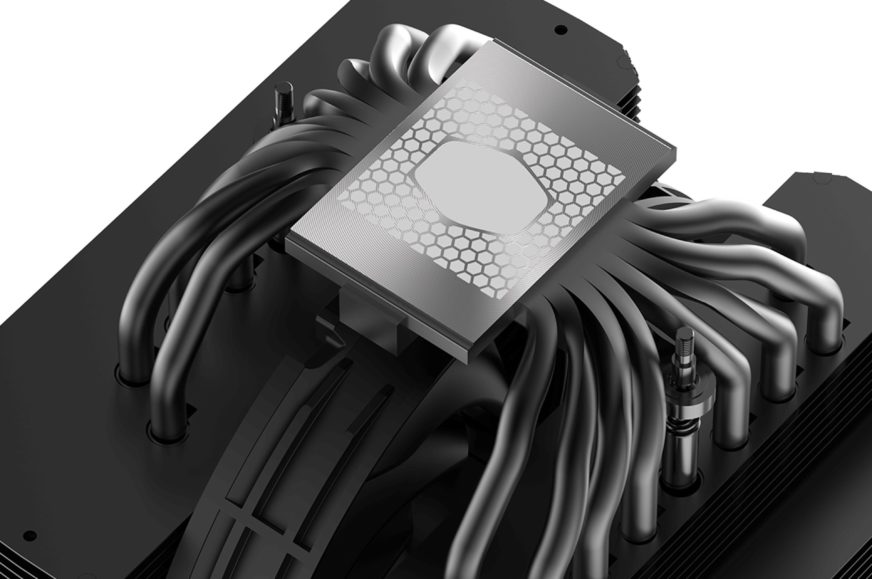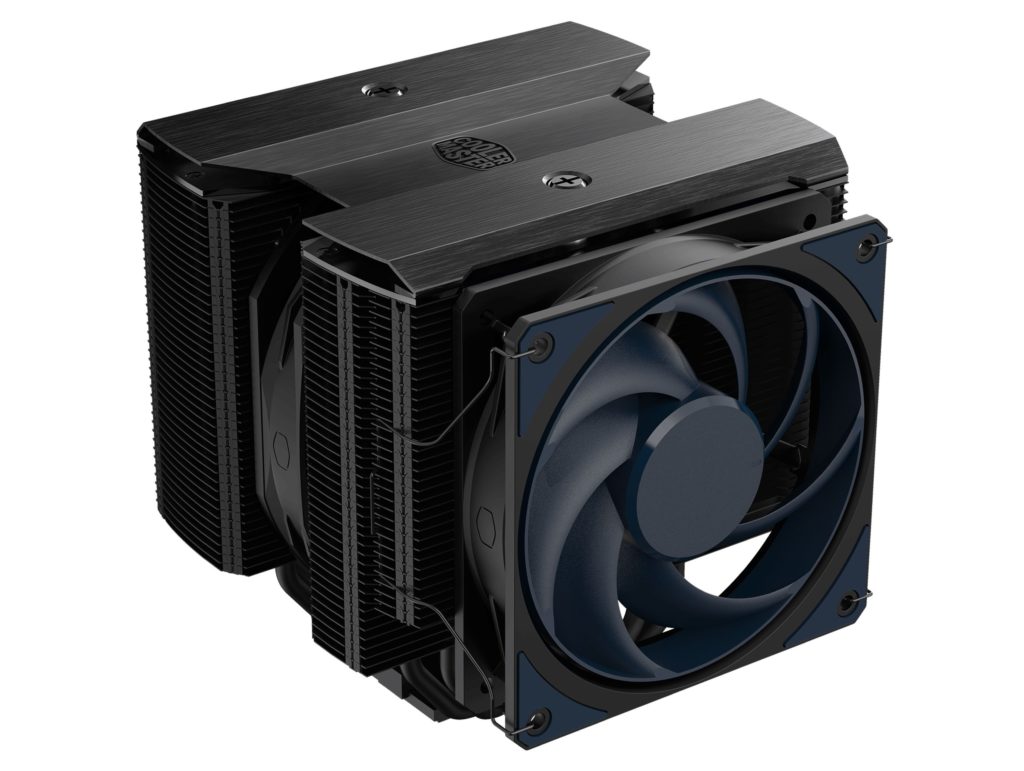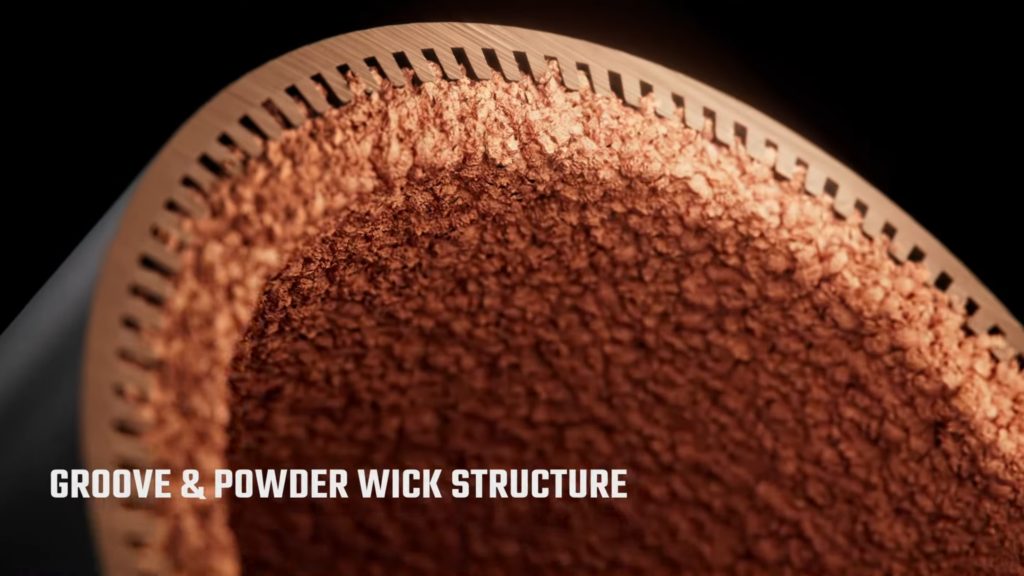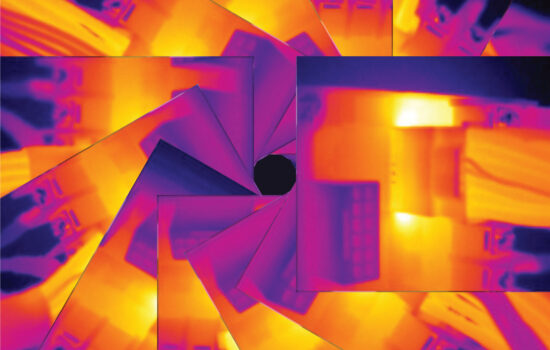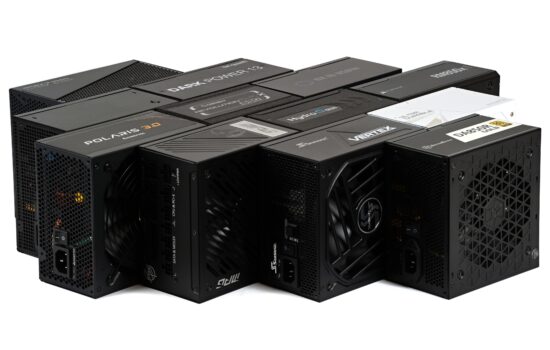Cooler Master MasterAir MA824
Cooler Master’s marketing around its latest CPU cooler builds on the use of “superconductive” heatpipes. Their structure should differ significantly from the designs in older coolers, and CM is talking about a tangible increase in efficiency, while not being afraid to put its own cooler in the confrontation. The latter, like all the others, may be somewhat buried or at least handicapped by this, but who knows… maybe it will be a proper evolution.
The Cooler Master MasterAir MA824 Stealth takes shape as a massive dual-tower cooler. Its heatsink is cooled by two Mobius fans, one 135mm and the other 120mm.
There are several similar designs, but this one is supposed to have the advantage of faster heat dissipation from the processor. This is thanks to the improved heatpipes. Cooler Master claims up to a 30% increase in effectiveness across its coolers. And an example of a cooler that the MA824 Stealth is compared to internally is the MasterAir 412 Stratos. However, that’s a simpler cooler with only one tower and only one fan, so those variables are probably involved in that percentage comparison and obviously the other variables as well. Still, the heatpipes will probably be more effective nonetheless, the technical prerequisites are there.
The superconductive heatpipes, as Cooler Master refers to them, have a remarkable cross-section, which is supposed to accelerate the transfer of heat from the condensate to the fins of the cooler. This is both by modifying the porous wall of the heatpipe and also by reshaping the inner shell. The latter, as you can see in the detail, has some kind of teeth. These increase the contact area with the surface with compressed copper microparticles and allow for greater (waste heat) transfer in the same amount of time. In other words, the heat exchange should be considerably faster than with previous Cooler Master coolers. Naturally, we cannot apply this to all coolers.
We can’t see inside the heatpipes of competing coolers (and actually neither this one) and it’s possible that their technical implementation can be even more effective, and it’s just that the manufacturers don’t put so much emphasis on it. Anyway, the thermal conductivity of the heatpipe is key. If the bottleneck is at this level, even a two-kilogram portion of efficiently formatted fins and even an extreme number of heapipes will not save the heatsink. There are eight of them in this case with a traditional diameter of 6 mm. The dimensions of the MA824 Stealth cooler are 162.2 × 150.6 × 165.6 mm, with the height corresponding to the highest value (165.6 mm).
Supported Intel sockets are LGA 1700, 1200, 115x and from AMD, AM5 and AM4. One hundred percent support of memory modules when using both fans is conditional on a maximum height of 42 mm. Cooler Master did not rotate the heatsink away from the DIMM slots, which is perhaps a bit of a shame. To improve support in the slots closest to the CPU socket it shortened a couple of the bottom fins on the front tower.
The cooler is already in our editorial office and it won’t be long before the test results are in. If you can’t resist and buy earlier, count on the fact that the fans may not be able to be slowed down to very low speeds via PWM, similar to the Mobius OC fans we recently tested. In the case of variants without OC in the name, it might not be so critical and the minimum speed will probably be lower just because of the fact that these are slower fans overall (with a maximum of around 1950 rpm and 1550 rpm in the case of the larger model in the middle, between the towers). Only tests will show how quiet this cooler can be.
The MasterAir MA824 Stealth is currently in the process of stocking and will appear in “your” store maybe any day now. The MSRP is 109 EUR.
English translation and edit by Jozef Dudáš
- Contents
- Cooler Master MasterAir MA824





